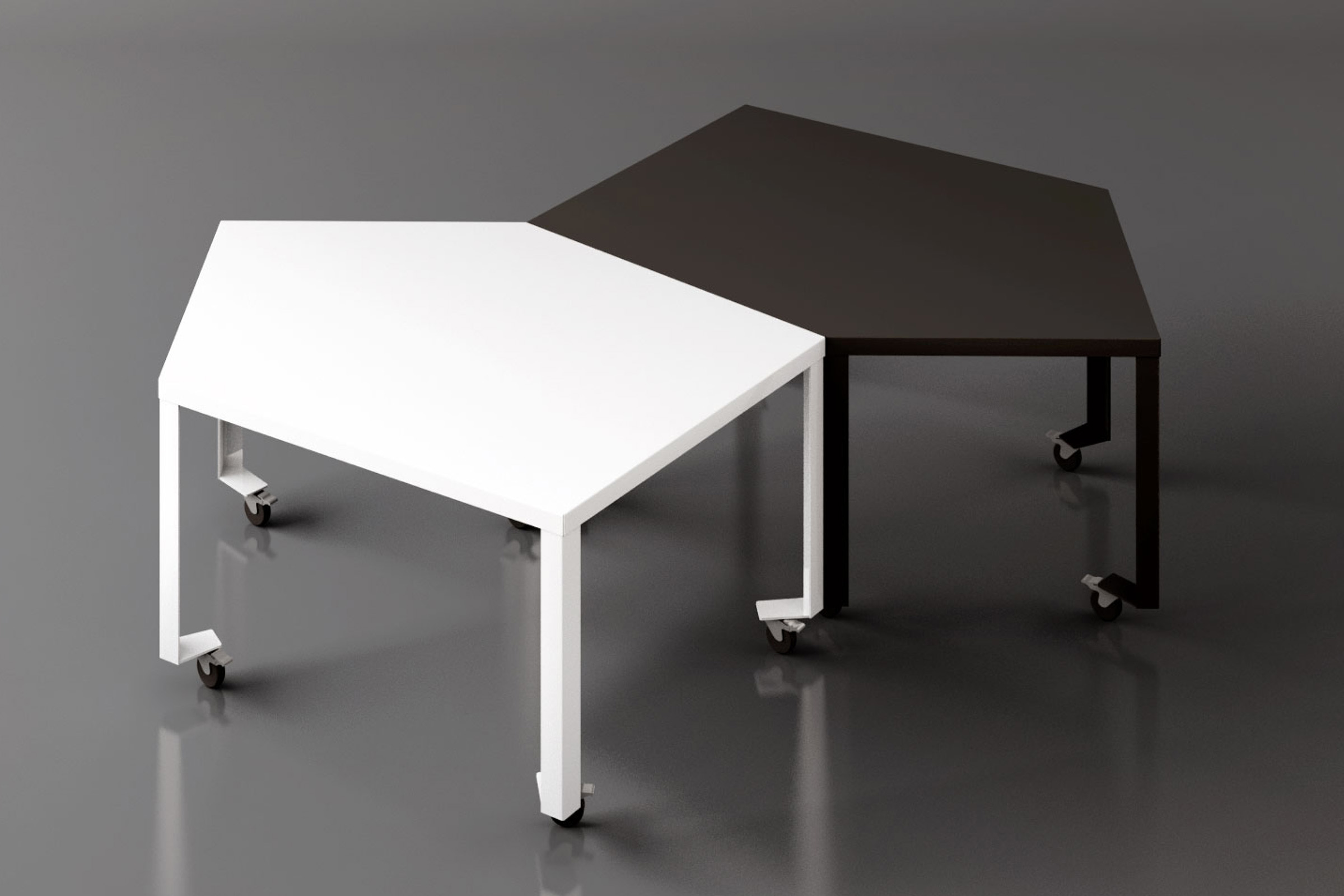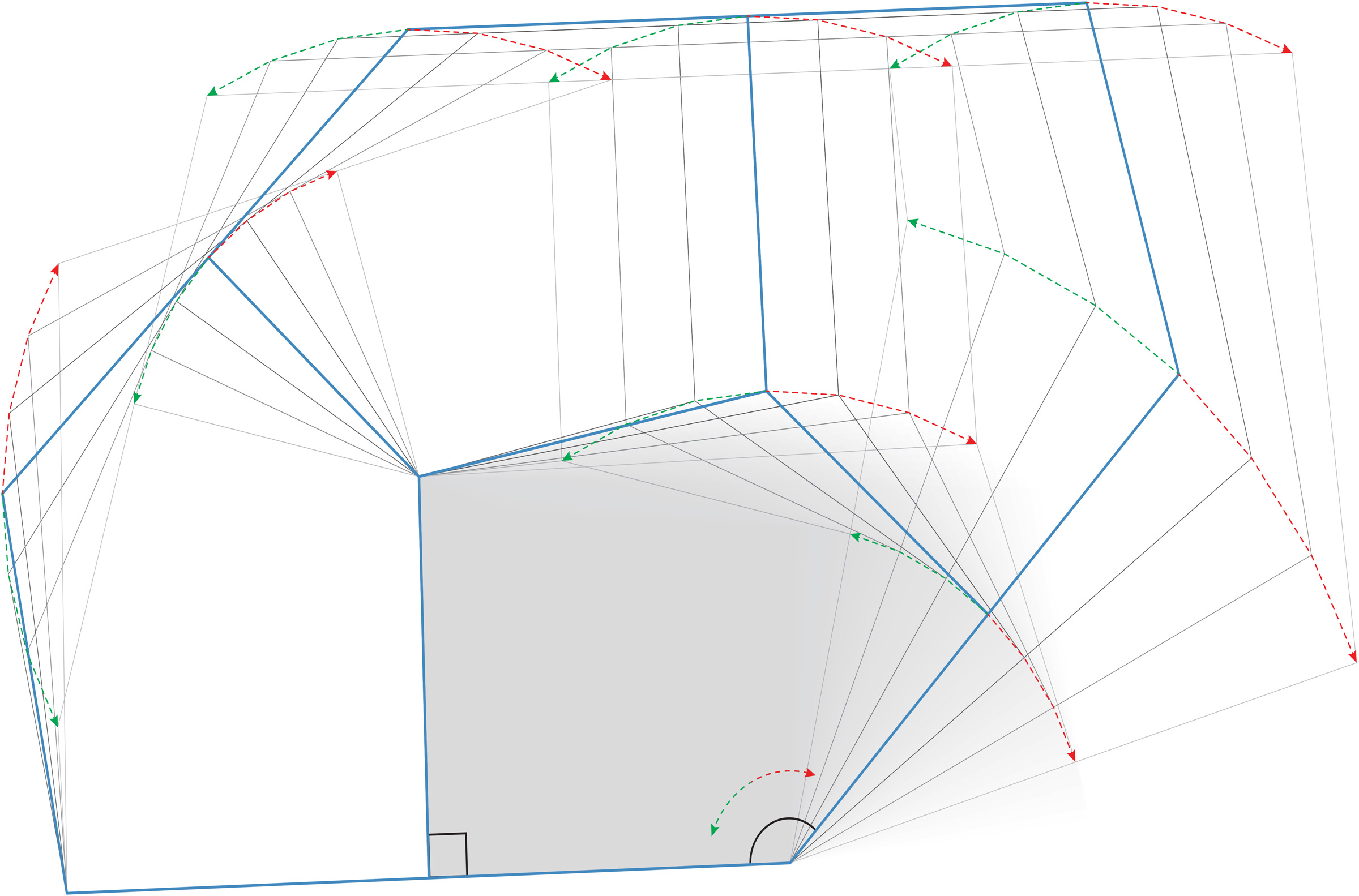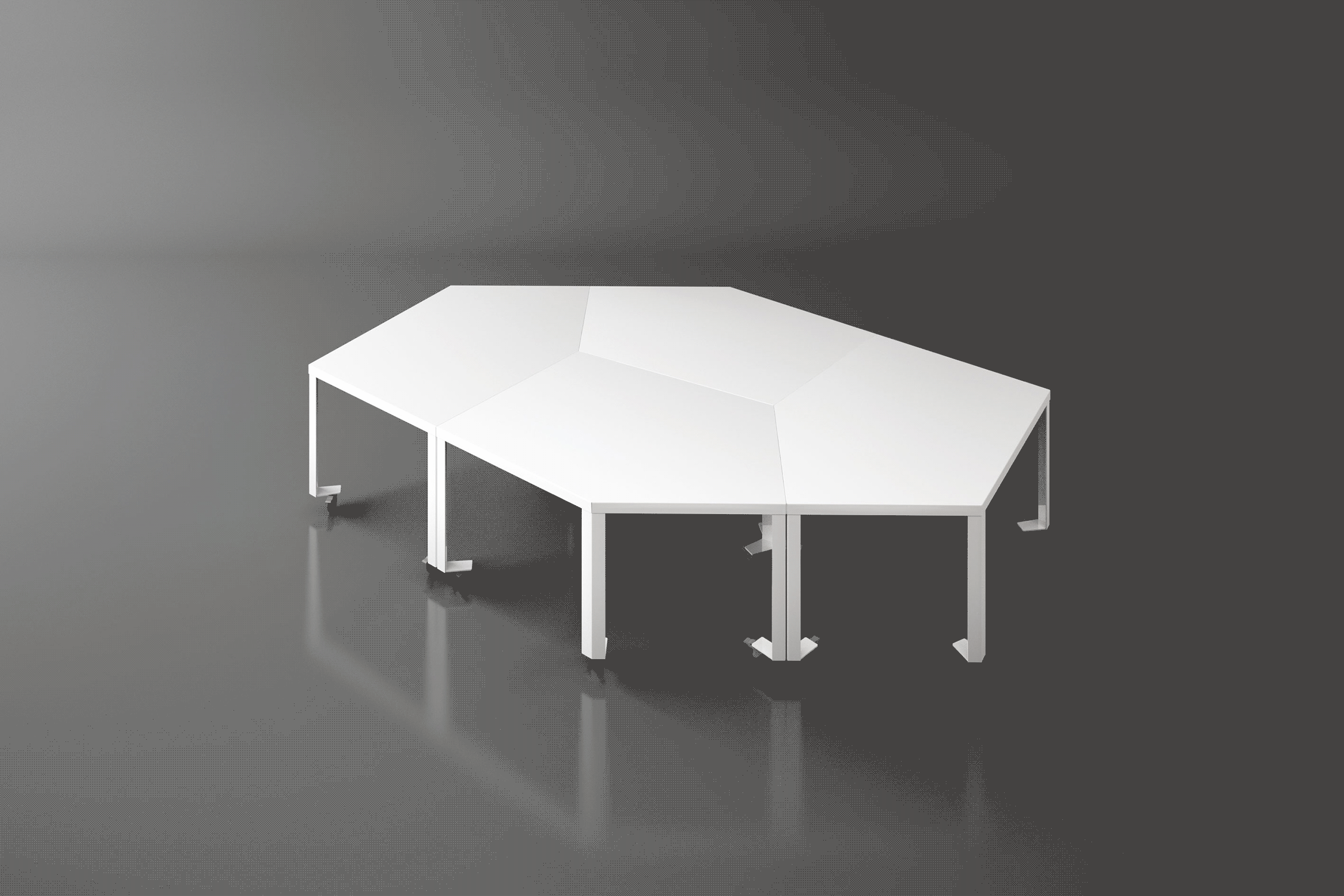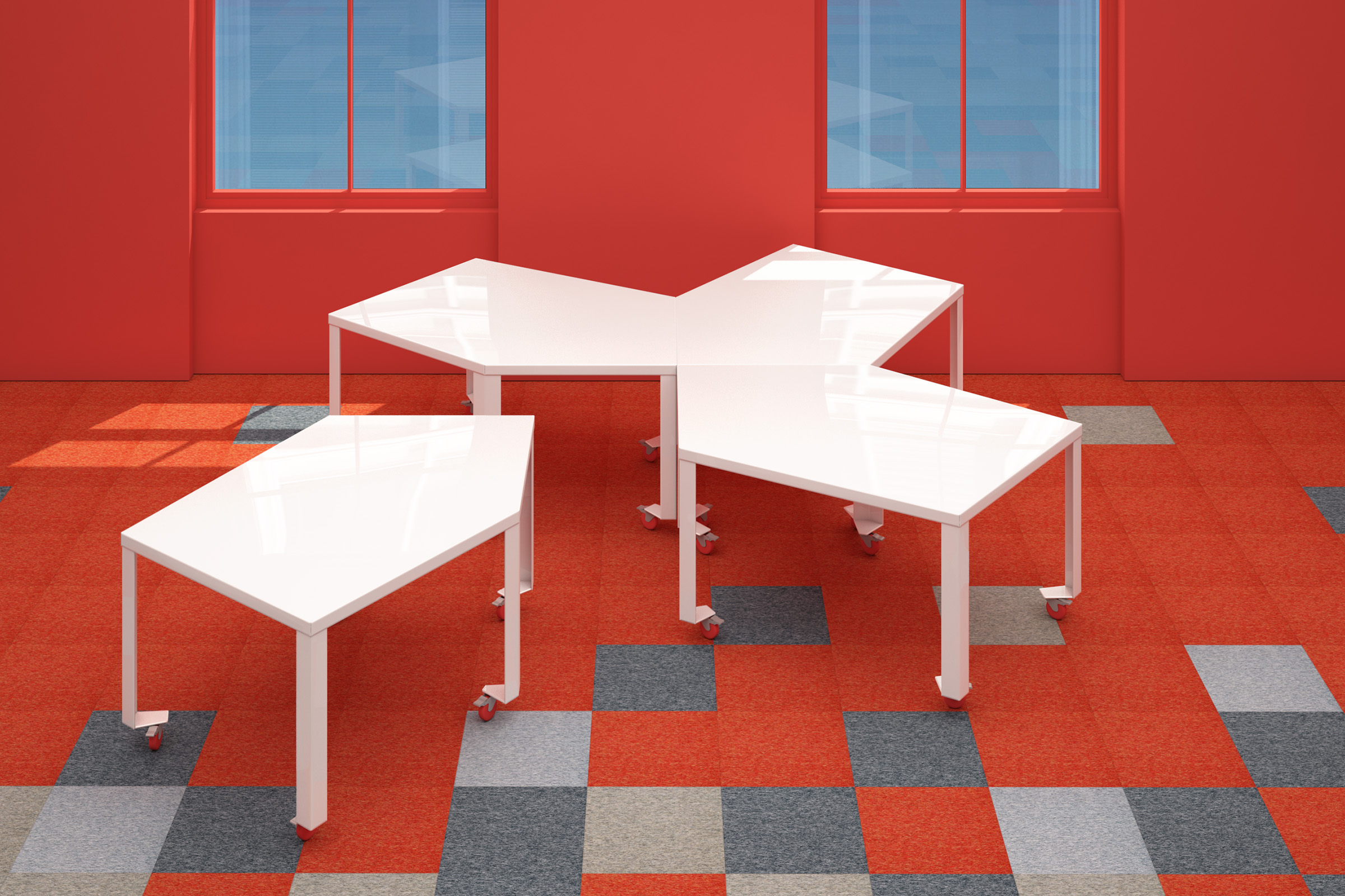

Generative diagram for top surface.


Configuration diagrams

The PenTables reinterpret the collaborative and flexible table. Used individually, it is an unusual 5-sided table; grouped together the tables open up endless possibility.
Originally designed with FACT for the Salina Art Center in Salina, Kansas, the PenTables are a modular set of asymmetric 5-sided tables based on a pentagonal tiling system. The PenTables reinterpret the collaborative and flexible table. Used individually, it is an unusual 5-sided table; grouped together the tables open up endless possibility. The tables can be composed in a variety of arrangements to support a multitude of social situations, from art classes to community meetings to large dinners. Made of welded steel with a powder-coated finish, legs attach to the top with hidden fasteners. The tables rest atop total-lock casters with non-marking wheels. The original table prototypes were built by FACT with steel and MDF parts fabricated by Cornhusker State Industries, the Nebraska State Prison shops.